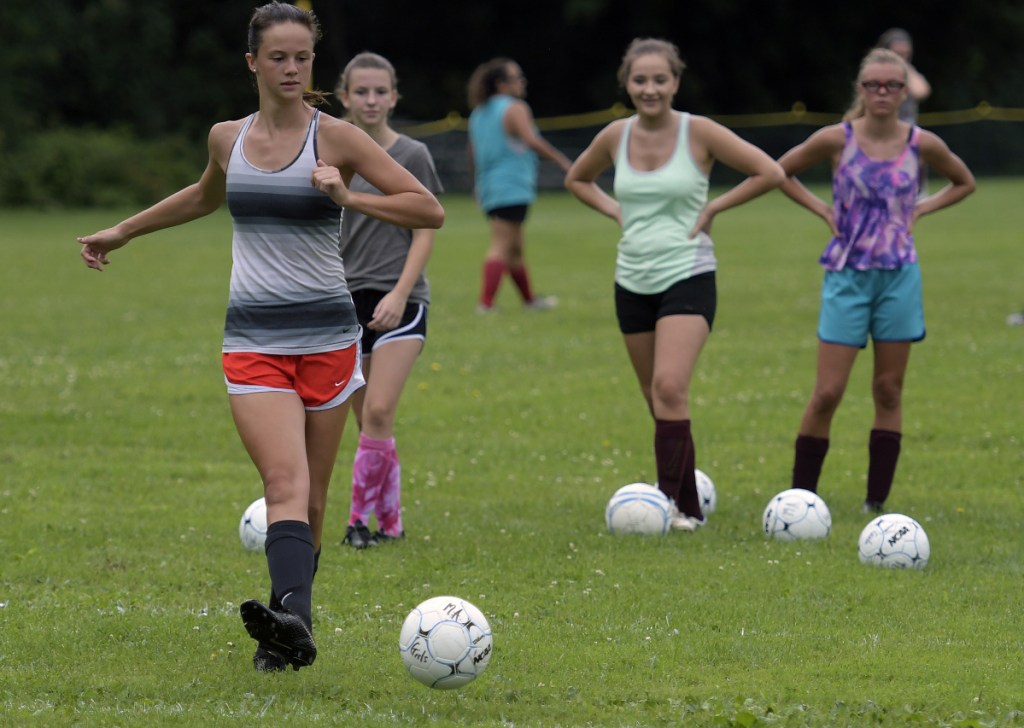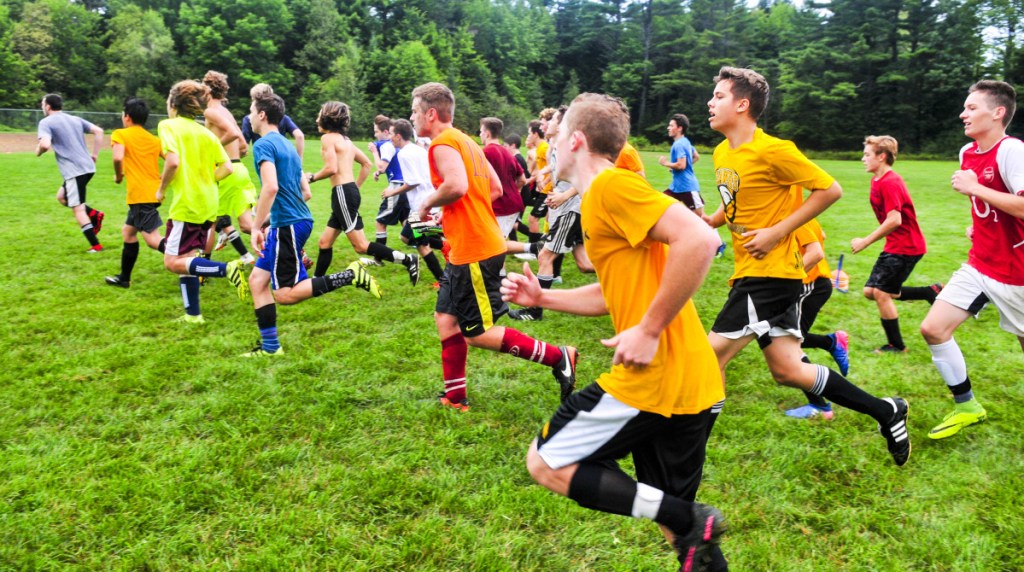There was a time when high school soccer coaches would implement a playing style and a formation, and neither of those would change from the first preseason training session straight through to the final whistle of the last postseason game.
If you lined up in a traditional 4-3-3 formation (four backs, three midfielders and three strikers), or a slightly more defensive 4-4-2, that’s what you stuck with. All season was spent working players into those roles, with little thought of adapting a system to the players themselves.
But welcome to Maine high school soccer in 2018, where coaches not only adjust formations from game-to-game, they’re also doing so in the middle of matches with regards to the score or the situation.
The credit, according to coaches, goes to the players and not to a seismic shift in philosophy.
“The quality of athletes is not as good as it once was, but the quality of soccer players is better than it’s ever been,” said Don Beckwith, the 16-year head coach of the Maranacook boys, where he’s won three of the last five Class C state championships. “They’re playing more soccer (year-round).”
Youth travel programs and premier-level teams are giving soccer-serious athletes, on both the boys and girls side of things, the chance to play more. But they’re also getting the chance to train with other high-level soccer players during the offseason on these teams, and they’re playing games against the best teams in the state week in and week out.
By the time players report for preseason training in August, they’re already in soccer shape — physically and mentally.
“I change more formations now than in the past, especially against a portion of the teams we play,” Beckwith said. “But the kids have the ability to break down a game far better than they used to. It wasn’t that long ago that I had one premier player. This year, I’ve got eight freshmen who have all played premier. Those players have played 40 more games than anybody else.”
Because the players are capable of adjusting more quickly, coaches are giving them more to work from. By the time preseason has ended, most teams have introduced at least two different formations while testing players in a number of different roles.
That flexibility not only makes the high school game better overall from a quality standpoint, it also allows less top-heavy teams to compete against talent-laden ones by approaching the game differently.
For example, think of it like a football coach scheming up a defense to take away what an opponent likes to do on offense, or how a baseball pitcher will try and work to a batter’s weaknesses.
“Kids have been exposed to more and more soccer, and they’re digesting it and understanding it,” Mt. Abram boys coach Darren Allen said. “How do they compare to us (when we were their age)? These kids are way better than we were. We played kick and run. They’re playing to certain situations and philosophies.”
There are other advantages, too, beyond being able to change in-game tactics or strategies. The Messalonskee and Erskine boys programs graduated several key players, and they’re relying on freshmen and sophomores to remain competitive in difficult Kennebec Valley Athletic Conference Class A and Class B leagues, respectively.
The players might be young and not yet the size of players two or three years older, but their soccer experience has them up to speed much more quickly than underclassmen in years past.
“For us, that’s good,” Erskine boys coach Carrie Larrabee said. “We’re always looking for those kids who are evolving into roles.”
Monmouth girls coach Gary Trafton has a tremendous goal-scoring talent in junior Audrey Fletcher. But he’s toyed with dropping the striker into a central midfield role to try and fill a void there left by graduation.
It’s another sign of the times — having players capable of playing more than one position on the pitch effectively.
“There’s no question that it’s good to have that (option),” Trafton said.
And options are what the game is all about now. Strikers can drop and play a holding defensive role late in a game, or outside backs can be shifted forward to get into the attack.
Welcome to Maine high school soccer in 2018, where more and more teams are adjusting on the fly.
Travis Barrett — 621-5621
tbarrett@centralmaine.com
Twitter: @TBarrettGWC
Send questions/comments to the editors.





Comments are no longer available on this story